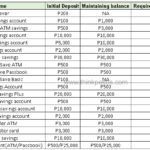
If you haven’t specifically registered for GST, you are not registered for GST. You won’t have to charge GST, and you can’t apply for GST refunds. For in accounting what is the difference between a liability account and an expense account example, if you make $60k between June of one year and July the next, you’re required to start charging GST immediately – even though that 12 month period is split between two financial years.
GST registration
On an invoice schedule, you’d have to declare the GST in the period the invoice was dated, and pay that GST to the IRD – even if you haven’t received it from your client yet. You’ll also decide whether you’ll pay on a “payments” or an “invoices” schedule. 

Principal purpose method (for goods and services of $10,000 or less)
At the time of the original consultation in March 2022, many of those submitting comment felt that New Zealand should adopt a wait-and-see approach to allow more time for the full impact of the sharing economy to be better understood. For example, if you file 6-monthly and your GST period is from the 1st of December to the 31st of May, your GST return will be due on the 28th of June. 
- You can generally claim the cost back when submitting a GST return.
- You’ll also decide whether you’ll pay on a “payments” or an “invoices” schedule.
- You don’t have to charge GST on exports, which includes products you sell on the internet to overseas customers.
- Sometimes, you may find that within a GST period, you’ve paid more in GST than you have collected.
You can claim this account for withholding tax on sales invoices amount back if you’re GST registered and are using the goods solely to make taxable supplies. For those sole traders who invoice for smaller amounts, you could make your invoices even simpler by creating a separate document for clients containing the bits that don’t change – like your name, your registration number, your NZBN etc. That way, all that ever needs to be included in an invoice is the date, and a description of your products/services. What we don’t recommend doing is absorbing the cost yourself – eg.
You can generally claim the cost back when submitting a GST return. If you buy goods or services from an unregistered person, they will not charge GST. For some special supplies, such as secondhand goods, you may still be able to claim a GST adjustment. If you’ve bought goods from overseas, the supplier probably will not charge you GST unless they carry on a taxable activity in New Zealand.
How can GST affect my business?
Whether or not you need to charge GST when selling your stuff overseas depends on whether or not your client exists in New Zealand. Invoices sent through our app will still include all the information required under the old rules, so you’re covered no matter what. Whether a price is GST inclusive, or has GST added on top, makes a real difference to the final cost. You can also specify in your quotes whether or not your prices are GST inclusive or exclusive. The way you position it could make a real difference, depending on your customer base.
But if you’re worried about the price jump, you could preempt the change with a quick email to your regular clients. It can be a bit nerve-wracking to suddenly “raise your prices” by 15%. But customers are used to paying GST, and should understand that they’re not paying you extra – they’re paying tax they owe to the government. Not everything you can purchase is subject to 15% GST, however. The New Zealand government exempts certain goods and services from GST, including long-term rental housing, donated goods, financial services, and (weirdly) fine metal. It’s added to the price you paid for the goods plus shipping costs, and you may have to pay it before customs will release the shipment.
It is usually charged at a rate of 15% by GST-registered persons and is added to the price of most goods and services supplied in New Zealand, including most imported goods and services. Once registered for GST, businesses must charge GST to their customers and pay anything that is owed to the New Zealand Inland Revenue. Businesses must also file GST returns at a frequency determined by its sales figures. Because businesses claim back their input GST, the GST inclusive price is usually irrelevant for business purchasing decisions, other than in relation to cash flow issues. Consequently, wholesalers often state prices exclusive of GST, but must collect the full, GST-inclusive price when they make the sale and account to the IRD for the GST so collected. GST-registered businesses don’t have to pay GST on services or subscriptions from overseas suppliers.

